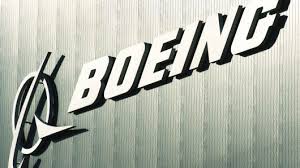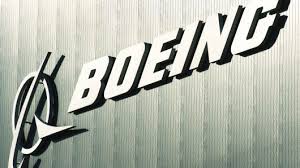
An unmanned, fighter-like jet which has been developed in Australia was unveiled by Boeing Co recently. The craft has been designed to fly alongside crewed aircraft and take part in combat at a fraction of the costs for manned crafts.
There is scope for modifications on the crafts and the US plane maker aims to sell the aircraft to customers all over the world. The plane is capable to take on multiple roles and is 38 feet long (11.6 metres) and has a range of 2,000 nautical mile (3,704 kilometre).
This is the first indigenously developed combat aircraft in Australia since World War II and is the largest project in terms of investment for unmanned aircraft for Boeing outside the United States. The company however did not divulge the cost of the craft.
Australian Minister for Defence Christopher Pyne told reporters at the Australian International Airshow that A$40 million ($28.75 million) in the prototype programme is being invested by the government because of its "enormous capability for exports".
There is demand among military around the world to access cheaper and sager means to maximise the resources and therefore there is also a growing interest among defence contractors in investing in such autonomous technology.
Investments in such crafts are being made by companies like Lockheed Martin Corp and Kratos Defence and Security Solutions Inc, all of which are Boeing rivals.
Shane Arnott, director of Boeing research and prototype arm Phantom Works International said that four to six of the newly developed aircrafts which are being called the Boeing Airpower Teaming System, would be able to participate in flight formations with a F/A-18E/F Super Hornet.
"To bring that extra component and the advantage of unmanned capability, you can accept a higher level of risk," he said. "It is better for one of these to take a hit than for a manned platform."
The US Air Force should examine ways to create pairs of crewed and uncrewed aircraft so that fleets can be expanded so that it is possible by it to complement a limited number of "exquisite, expensive, but highly potent fifth-generation aircraft" like the F-35, the Mitchell Institute for Aerospace Studies in the United States had said last year.
"Human performance factors are a major driver behind current aerial combat practices," the policy paper said. "Humans can only pull a certain number of G's, fly for a certain number of hours, or process a certain amount of information at a given time."
Kristin Robertson, vice president and general manager of Boeing Autonomous Systems said that electronic warfare, intelligence, surveillance and reconnaissance right beside manned aircraft such as the P-8 Poseidon and E-7 Wedgetail, are the other roles that the Boeing system could undertake in addition to acting like a fighter craft.
"It is operationally very flexible, modular, multi-mission," she said. "It is a very disruptive price point. Fighter-like capability at a fraction of the cost."
"I would say we are some years away from exports, we are probably years away from it being in operation here in Australia," Pyne said. "It is designed to be a cheaper platform, a shield if you like around the more expensive platforms, to protect our servicemen and women who might be on a Poseidon or a Wedgetail or a F-35A."
(Source:www.kornferry.com)
There is scope for modifications on the crafts and the US plane maker aims to sell the aircraft to customers all over the world. The plane is capable to take on multiple roles and is 38 feet long (11.6 metres) and has a range of 2,000 nautical mile (3,704 kilometre).
This is the first indigenously developed combat aircraft in Australia since World War II and is the largest project in terms of investment for unmanned aircraft for Boeing outside the United States. The company however did not divulge the cost of the craft.
Australian Minister for Defence Christopher Pyne told reporters at the Australian International Airshow that A$40 million ($28.75 million) in the prototype programme is being invested by the government because of its "enormous capability for exports".
There is demand among military around the world to access cheaper and sager means to maximise the resources and therefore there is also a growing interest among defence contractors in investing in such autonomous technology.
Investments in such crafts are being made by companies like Lockheed Martin Corp and Kratos Defence and Security Solutions Inc, all of which are Boeing rivals.
Shane Arnott, director of Boeing research and prototype arm Phantom Works International said that four to six of the newly developed aircrafts which are being called the Boeing Airpower Teaming System, would be able to participate in flight formations with a F/A-18E/F Super Hornet.
"To bring that extra component and the advantage of unmanned capability, you can accept a higher level of risk," he said. "It is better for one of these to take a hit than for a manned platform."
The US Air Force should examine ways to create pairs of crewed and uncrewed aircraft so that fleets can be expanded so that it is possible by it to complement a limited number of "exquisite, expensive, but highly potent fifth-generation aircraft" like the F-35, the Mitchell Institute for Aerospace Studies in the United States had said last year.
"Human performance factors are a major driver behind current aerial combat practices," the policy paper said. "Humans can only pull a certain number of G's, fly for a certain number of hours, or process a certain amount of information at a given time."
Kristin Robertson, vice president and general manager of Boeing Autonomous Systems said that electronic warfare, intelligence, surveillance and reconnaissance right beside manned aircraft such as the P-8 Poseidon and E-7 Wedgetail, are the other roles that the Boeing system could undertake in addition to acting like a fighter craft.
"It is operationally very flexible, modular, multi-mission," she said. "It is a very disruptive price point. Fighter-like capability at a fraction of the cost."
"I would say we are some years away from exports, we are probably years away from it being in operation here in Australia," Pyne said. "It is designed to be a cheaper platform, a shield if you like around the more expensive platforms, to protect our servicemen and women who might be on a Poseidon or a Wedgetail or a F-35A."
(Source:www.kornferry.com)














